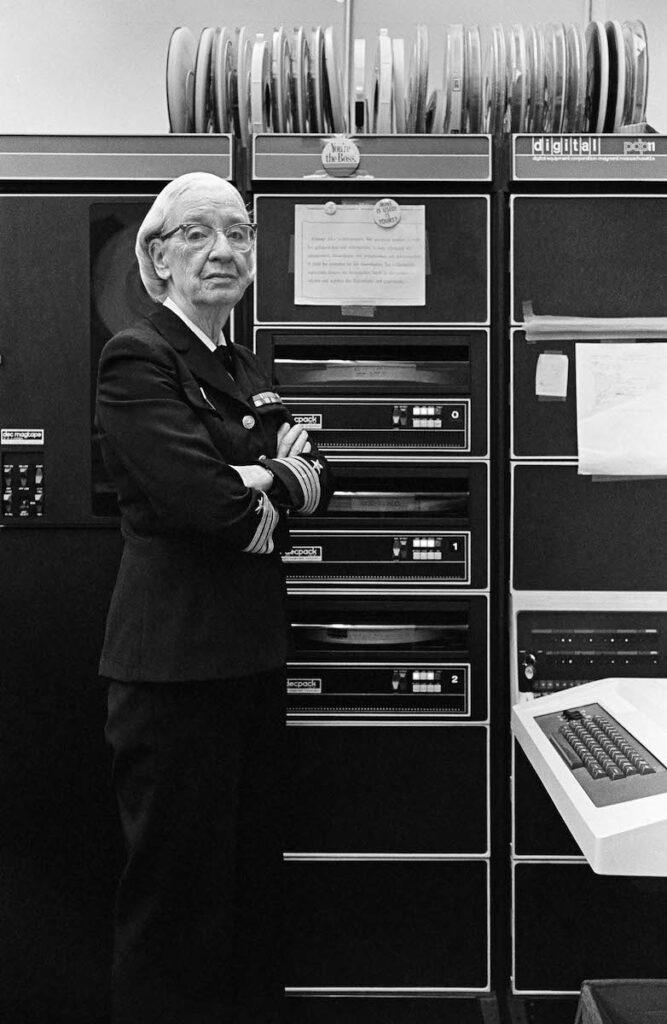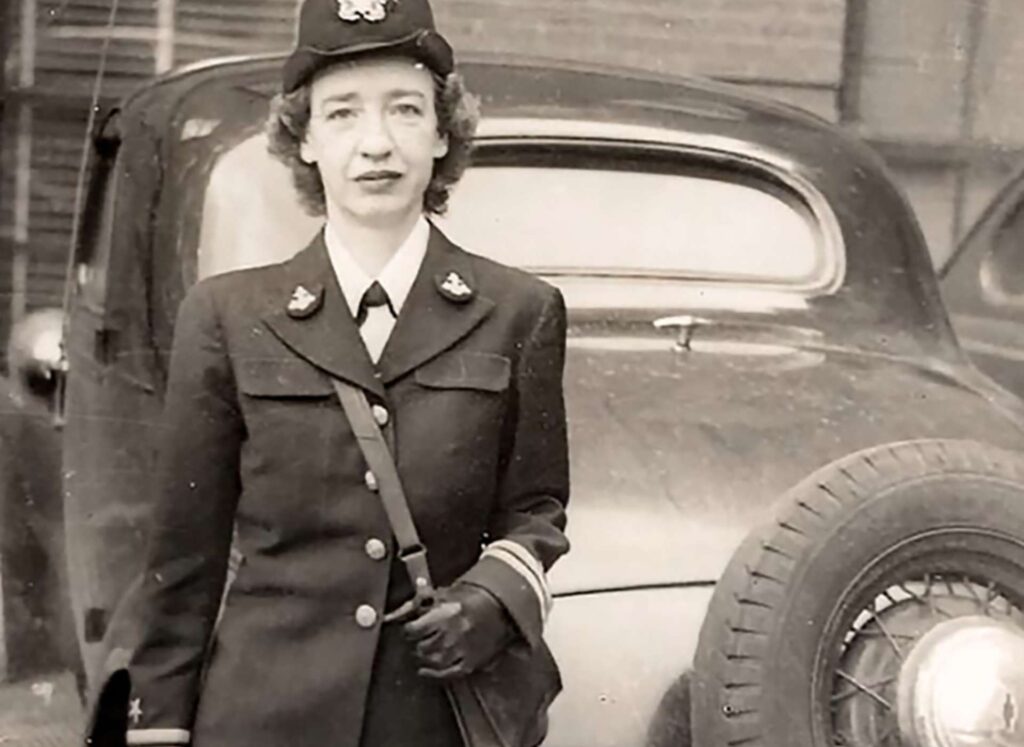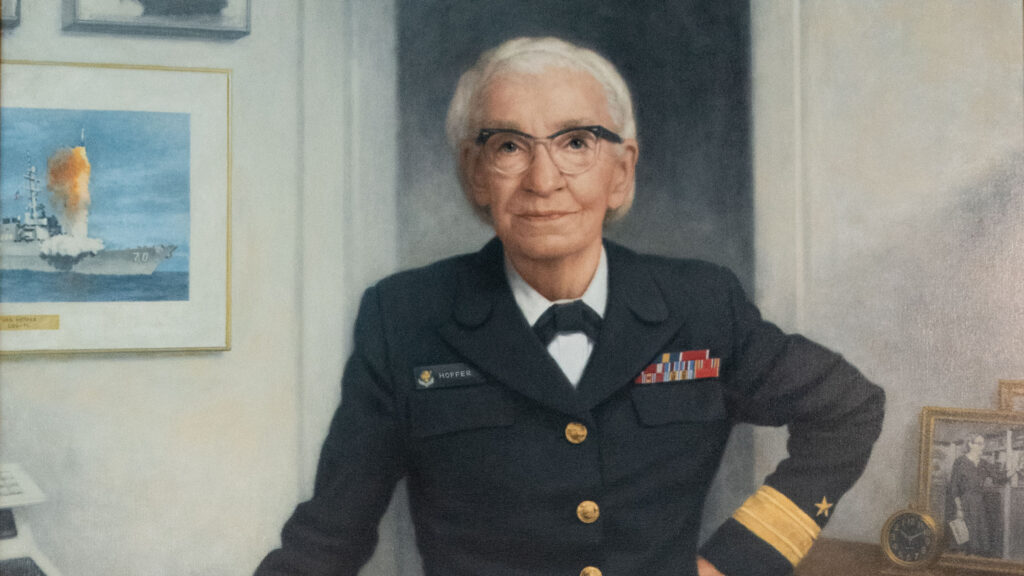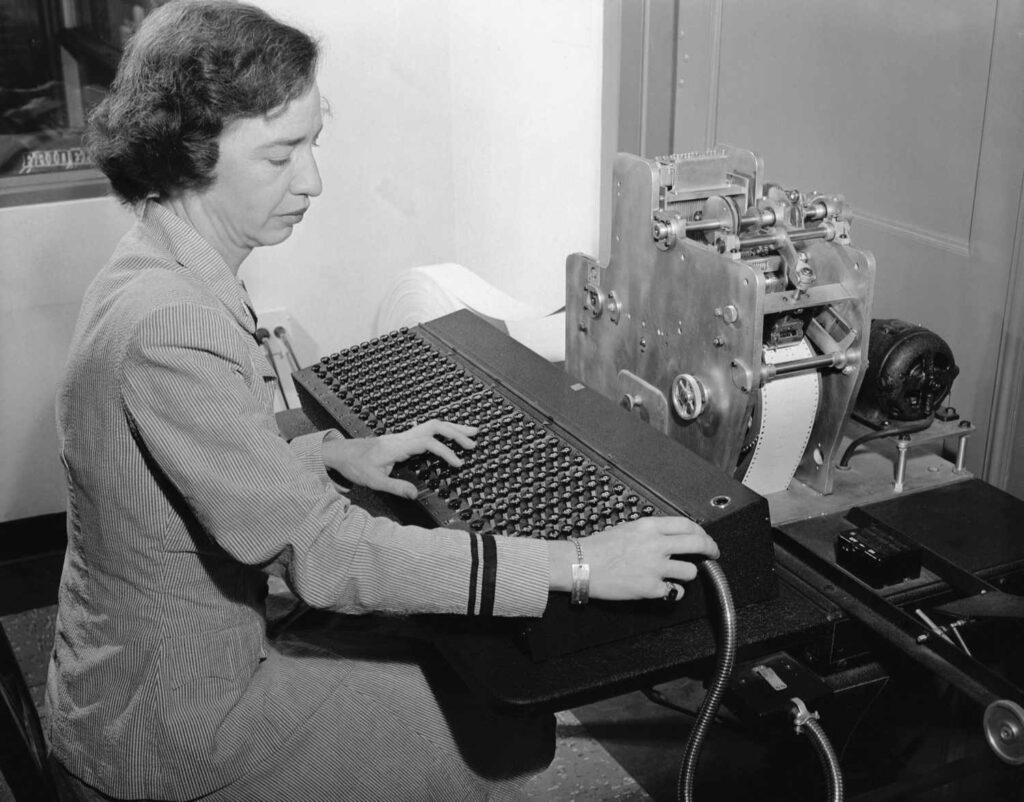Before Grace Hopper revolutionized computer programming languages, computers could only understand sequences of numbers. Programmers spent countless hours writing complex mathematical codes that only machines could interpret. Then came a brilliant mathematician and naval officer who dared to imagine something different: what if computers could understand words that humans actually use?
Known as “Amazing Grace” for her remarkable reputation in the field, Grace Murray Hopper didn’t just contribute to computer science—she fundamentally transformed how we interact with computer technology. Her pioneering accomplishments, including the invention of the first compiler, opened the door to automatic programming and laid the groundwork for every programming language we use today. From business applications to the software running on your smartphone, Hopper’s innovations touch virtually every aspect of modern computing.
This is the story of how one woman’s vision simplified computer technology forever and earned her recognition from institutions like the British Computer Society as one of computing’s most influential pioneers. Hopper’s influence continues to shape the information age, marking her as a key architect of our modern digital landscape.
The Making of a Computing Pioneer

Born Grace Brewster Murray in 1906 in New York City, Hopper displayed an early fascination with mechanical devices. As a child, she famously dismantled seven alarm clocks in her home, determined to understand how they worked. This curiosity about the inner workings of machines would define her entire career.
Hopper excelled academically, earning her bachelor’s degree in mathematics and physics from Vassar College in 1928. She continued her education at Yale University, where she completed both her master’s degree and PhD in mathematics by 1934. Her doctoral dissertation focused on algebraic equations, providing the mathematical foundation that would prove crucial in her later work with computer programming. During her time at Yale, she also served as a research fellow in mathematics, contributing to advanced research projects.
After completing her education, Hopper joined the faculty at Vassar College, where she taught mathematics for over a decade and was promoted to associate professor before her military service. Her academic career also included involvement with electrical engineering topics, which would later influence her pioneering work in computer science. However, World War II would soon redirect her career toward the emerging field of computer science.
Early Life and Education
Grace Murray Hopper’s journey into the world of computer programming languages and computer technology began in New York City, where she was born on December 9, 1906, to Walter Fletcher Murray and Mary Campbell Van Horne. From an early age, Hopper’s insatiable curiosity set her apart—she was the kind of child who took apart alarm clocks just to see how they worked, a trait that foreshadowed her future as a computer pioneer.
Her early life was shaped by a strong emphasis on education and intellectual exploration. Hopper attended the Hartridge School in Plainfield, New Jersey, where she excelled in mathematics and science, subjects that would become the foundation of her groundbreaking work in computer programming. After graduating, she enrolled at Vassar College, earning her bachelor’s degree in mathematics and physics in 1928. Her academic achievements at Vassar reflected not only her intelligence but also her determination to push boundaries in fields where women were often underrepresented.
Hopper’s pursuit of knowledge led her to Yale University, where she earned a master’s degree in mathematics in 1930, followed by a Ph.D. in mathematics in 1934. At Yale, she conducted research under the guidance of renowned mathematician Øystein Ore. This experience that deepened her understanding of complex mathematical concepts and prepared her for the challenges of computer science and programming languages. These formative years, rooted in the support of her family, the mentorship of her teachers, and her own relentless curiosity, laid the groundwork for Hopper’s future innovations in computer technology and her lasting impact on the world.
War, Mathematics, and the Harvard Mark I

When the United States entered World War II, Hopper felt compelled to serve her country. Although she was initially rejected from joining the Navy due to her age and small size, she persisted and was eventually accepted. In 1943, she joined the United States Navy Reserve as a Lieutenant (junior grade), serving with the Navy Waves and becoming part of the armed forces. She was assigned to the Harvard Computation Laboratory, where she worked on the ordnance computation project as part of the Bureau of Ships Computation Project at Harvard University. This assignment would change the course of computing history.
At Harvard, Hopper encountered the Mark I, one of the first computers and a pioneering electromechanical machine. This massive device, measuring 51 feet long and weighing five tons, could perform complex mathematical calculations necessary for wartime navigation and ballistics, thereby supporting the war effort. However, programming the Mark I required painstaking work with punch cards and complex mathematical notation.
Hopper quickly mastered the Mark I’s programming requirements and began writing the computer’s operating manual. More importantly, she started envisioning ways to make computer programming more accessible and efficient. Her work with the Mark I convinced her that computers could do much more than just perform calculations—they could be taught to understand human language.
The Revolutionary Concept: Automatic Programming and Teaching Computers to Understand Words
After the war, Hopper continued her work with early computers, joining the Eckert-Mauchly Computer Corporation (later acquired by Remington Rand). Here, she began developing her most significant contribution to computer science: the A-0 System, recognized as one of the first compilers. Hopper’s work in this area was groundbreaking, setting the stage for future advancements in programming languages.
Traditional computer programming required writing instructions in machine language—long strings of numbers that corresponded to specific operations. This process was not only time-consuming but also prone to errors. Hopper recognized that this approach severely limited who could work with computers and what they could accomplish.
Her breakthrough idea was elegant in its simplicity: create a program that could translate human-readable instructions into machine language. This translator—the compiler—would allow programmers to write instructions using familiar mathematical symbols and eventually words from natural language.
The A-0 System, completed in 1952, was the world’s first compiler. As one of the first compilers, it could take a program written in a more human-friendly format and automatically convert it into machine code. Hopper’s work made programming more accessible not only to mathematicians and scientists but also to data processors and other users, helping to bridge the gap between complex computer systems and those who needed to use them. This innovation represented the birth of automatic programming, fundamentally changing how humans interact with computer technology.
Machine-Independent Programming: Breaking Down Barriers

Hopper’s vision extended beyond simply making programming easier. She understood that for computers to reach their full potential, programming languages needed to be machine-independent. At the time, programs written for one computer couldn’t run on another, severely limiting the practical applications of computer technology.
Working with her team, Hopper developed the concept of machine-independent programming languages. These languages could be translated by compilers to run on different types of computers, making software more portable and valuable. This concept became fundamental to modern computer programming, enabling the widespread adoption of computer technology across various industries.
Her work laid the theoretical foundation for what would become one of the most important programming languages in business computing: COBOL. The development and standardization of data systems languages, such as FLOW-MATIC, played a crucial role as precursors to COBOL, enabling more accessible programming for data processing in both business and military applications.
COBOL and the Democratization of Computer Programming Languages
By the late 1950s, Hopper turned her attention to creating a programming language that business professionals could understand and use. Working with a team of programmers and linguists, she helped develop COBOL (Common Business-Oriented Language).
After COBOL’s development, Hopper served as Director of the Navy Programming Languages Group, where she led efforts to standardize programming practices across the Navy.
COBOL represented a radical departure from existing programming languages. Instead of cryptic mathematical symbols, COBOL used English-like statements that business professionals could read and understand. Commands like “ADD,” “SUBTRACT,” and “MOVE” made programming accessible to people without extensive mathematical backgrounds.
Hopper was also known for her public relations work and her role as a goodwill ambassador, promoting computer technology at industry conferences and collaborating with organizations such as Digital Equipment Corporation to demonstrate early computing concepts.
The impact of COBOL on business computing is undeniable. For the first time, companies could train their own staff to program computers for business applications, such as payroll, inventory management, and financial reporting. COBOL simplified computer technology to such an extent that it democratized programming, opening the field to thousands of new practitioners.
COBOL became one of the most widely used programming languages in business and government applications. Even today, many critical systems in banking, insurance, and government still rely on COBOL programs, a testament to the language’s durability and Hopper’s foresight.
Recognition and Legacy
Grace Murray Hopper received numerous honors during her lifetime, including recognition from the British Computer Society and many American institutions. She was the first woman to receive the Data Processing Management Association’s Computer Pioneer Award and was posthumously awarded the Presidential Medal of Freedom.
Her contributions to computer science extend far beyond her technical innovations. Hopper fundamentally changed how we think about the relationship between humans and computers. She proved that computer technology didn’t have to be intimidating or incomprehensible—it could be designed to work with human language and logic.
The Enduring Impact on Modern Computing
Every time you interact with a computer program, you’re benefiting from Grace Hopper’s innovations. Modern programming languages, such as Python, Java, and JavaScript, all rely on the compiler concept she pioneered. The idea that computers should understand human-readable instructions—rather than requiring humans to speak only in machine language—has shaped every aspect of software development.
Hopper’s influence extends to automatic programming tools, integrated development environments, and even artificial intelligence systems that generate code from natural language descriptions. Her vision of simplified computer technology has made programming accessible to millions of people worldwide, fueling the digital revolution that continues to this day.
Grace Hopper’s Revolutionary Vision Lives On

Grace Hopper transformed computer programming from an arcane mathematical discipline into a tool that ordinary people could master and use. Her invention of the compiler didn’t just make programming easier—it made the entire digital age possible by allowing humans to communicate with computers in terms they could understand.
From business applications running on COBOL to modern apps built with user-friendly programming languages, Hopper’s influence permeates every corner of computer science. She proved that the most profound technological advances often come from asking a simple question: how can we make this work better for people?
As we continue advancing into an era of artificial intelligence and machine learning, Hopper’s fundamental insight remains as relevant as ever: technology should serve humanity, not the other way around. Her legacy reminds us that the most revolutionary innovations often come from making complex things simple.
Looking to Protect Your Intellectual Property?
Please contact Arlen Olsen at Schmeiser, Olsen & Watts LLP at aolsen@iplawusa.com.
About the Author

Mr. Olsen, a former adjunct professor of intellectual property law, has over 30 years of experience in all aspects of intellectual property law. Mr. Olsen is a founding Partner of Schmeiser, Olsen & Watts LLP and a former United States Patent Examiner. Mr. Olsen has prosecuted numerous patents that have been litigated and received damages of over 60 million dollars. Additional activities include teaching seminars, appearing as a guest lecturer on intellectual property matters for corporations and educational institutions, and evaluating and consulting with clients regarding the scope, enforcement, and protection of intellectual property rights.



